Opinion
“Editor’s Call for Genuine Election Promises | Giga Gears”
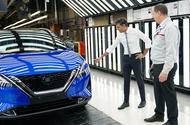 Irrespective of the party, campaigns now seem to be part of an infinite game of promises to fix stuff that’s broken
Irrespective of the party, campaigns now seem to be part of an infinite game of promises to fix stuff that’s broken
A week into the general election campaign and we await the first real promise - however much of a pinch of salt it should be taken with - to be made about what the automotive industry can expect from a new government after the election on 4 July.
My stalking of Google News headlines hasn’t turned up anything more than a Liberal Democrat candidate being “incensed” by an “electioneering” pledge from the Conservative-run Kent County Council for a ‘Pothole Blitz’ over the summer. Whether that pledge refers to a blitz of potholes being repaired or opened up by another downpour is unclear.
With party manifestos still to be published, it’s left to vague pledges that ultimately all end up sounding the same once you detach the party from the statement. ‘Get Britain building again’, ‘Grow the economy’, increase, cut, reform, scrap.
Election campaigns now seem to be part of an infinite game of promises to fix stuff that’s broken (often ignoring that those promising the fix may have broken it in the first place…), mixed in with often crass patriotism that makes everything far more emotional and divisive than it needs to be.
Serious, sensible, grown-up industries like automotive, with billions in economic wealth for the country linked to them, are more publicly than ever despairing at how to mitigate against chest-beating from under-qualified people making decisions they don’t understand the consequences of.
The banning of the sale of internal-combustion-engined cars in 2035 is a bit more than the tip of the iceberg, yet it illustrates the point perfectly. Take the right or wrong out of it, and just look at the decision making to get to where we are now.
In 2017, it was announced that internal-combustion-engined vehicles would be banned in 2040 by the government as part of its net-zero target in 2050. Three years later, this became 2035, and later in the same year, it was down to 2030. Last year, it went back to 2035. The same political party in government, and three seismic shifts of the goalposts.
Who’s to say we’re not done yet, particularly when the only thing actually enshrined in law is that 80% of new car sales in the UK must be zero-emission by 2030?
That’s just the ultimate decision and policy; then comes the strategy of how to get there, of which there remains no clear long-term one that can be truly separated from the whim of party politics.
No wonder Ineos Automotive CEO Lynn Calder recently claimed it is “very difficult to make decisions” at the moment. She’s just as aware that “it’s therefore very difficult for people to choose a car”.
The automotive industry will enter the election conversation at some point, and perhaps may even be part of manifestos. There will probably be some more cash for potholes. The ban may stay. It might shift. We hope car makers will be encouraged to invest in the UK.
One thing is clear: following the conclusion of July 4's election, the goalposts must stay fixed.
“Geneva Motor Show Demise: The Culprit Revealed? | Giga Gears”
 In the wake of today’s bombshell news from the event organisers, it’s a question worth exploring...
In the wake of today’s bombshell news from the event organisers, it’s a question worth exploring...
Who killed the Geneva motor show? That might not rival ‘who killed JR?' for a place in the pop culture lexicon, but in the wake of today’s bombshell news from the event organisers, it’s a question that is worth exploring for anyone interested in the automotive industry.
First, we can all agree the show really is dead this time, right? The press release only refers to a decision “not to organise the next edition” of the show, but it’s clear this isn’t just a one-year pause (even if the ‘spin-off’ show in Qatar survives).
The board of the organising committee is aiming to dissolve the foundation that organises the event, due to the “recognition that market conditions in Europe are not conducive to the success of future editions”.
And so ends the rich history of the world’s oldest motor show, an event first held in 1905 and long the most important single event of the European car industry calendar.
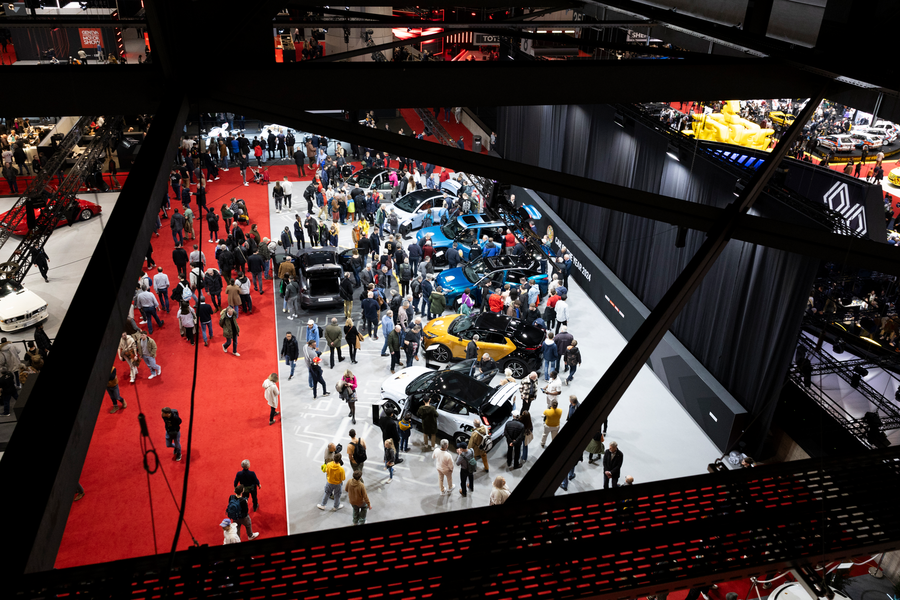
While its struggles in recent years – this year’s shell of an event was the first since 2019 – might cloud its legacy, it’s important to remember just how important Geneva was for so long.
Thanks to its ‘neutral’ status and date early in the year, Geneva was for decades warmly embraced by the whole industry and used for the launch of countless significant cars.
For journalists, it was an unmissable event, a chance to speak to all the leading power brokers in one place. And for millions of car enthusiasts, it was a chance to see the latest metal up close in a quick hit. But no longer.
At a time when motor shows in Europe and the US are struggling but those in China are thriving, it’s important to try to understand the root issues. So, what did kill the Geneva motor show?
Well, the first suspect is, predictably, Covid. The February 2020 Geneva show was looking strong until organisers decided to cancel it at the last possible minute as the virus spread into Europe.
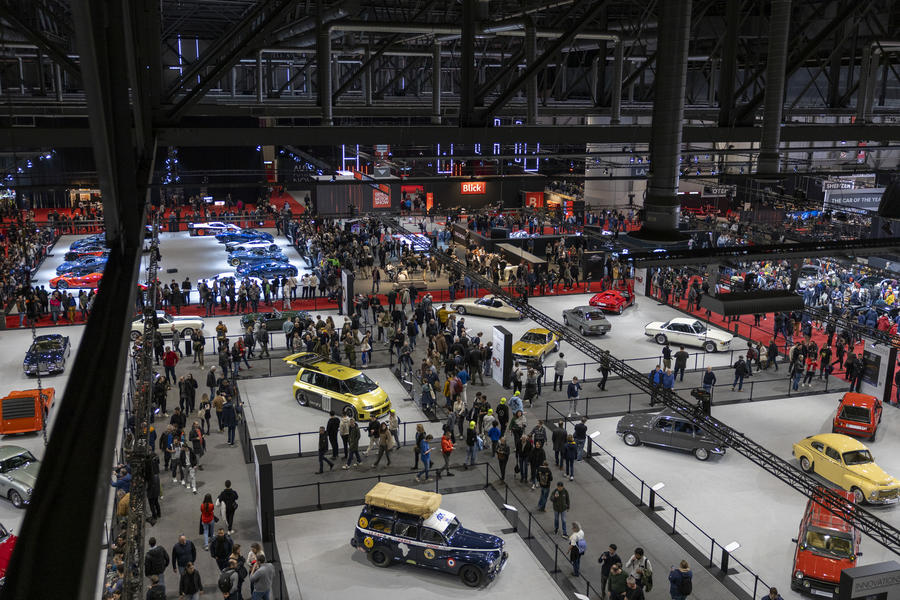
Covid also scuppered the 2021 edition, and with that momentum lost, Geneva's organisers couldn’t find the funding to stage the event again in 2022 or 2023. And by the time this year’s event was held, it felt like the industry had worked out how to cope without it.
But the organisers can’t just blame the pandemic: many in the industry are still angered by the way in which the 2020 event was cancelled abruptly at the last possible minute – with many of the stands already built – and with no refunds dished out.
Some of the car firms were so enraged that they wouldn’t return their support in subsequent years.
In hindsight, Geneva's organisers were dealt a tough hand by the way that Covid spread - albeit one they surely could have dealt with better. But their attitude was undoubtedly a factor, even if current CEO Sandro Mesquita did much to try and win back over the industry with a new approach in recent years.
And the Geneva organisers clearly believe the industry should have supported the show more. Alexandre de Senarclens, the president of the organising committee, pointedly cited the “competition” from the Paris and Munich motor shows, “which are favoured by their domestic industry.”
While Renault and a handful of Chinese brands exhibited in neutral Switzerland this year, the bulk of the European industry sat back. In fact, Fiat even released a whole bunch of Panda concepts the night before the show in what clearly seemed a ‘show spoiler’.
Then again, that Fiat release hinted at another truth learned in the four years Geneva didn’t run: in an era when they can target consumers directly with social media and video, manufacturers don’t really need motor shows any more.
In fact, some are just holding their own: Toyota, Polestar and Kia have all staged events that allow journalists to get motor show-style access in a bespoke format.
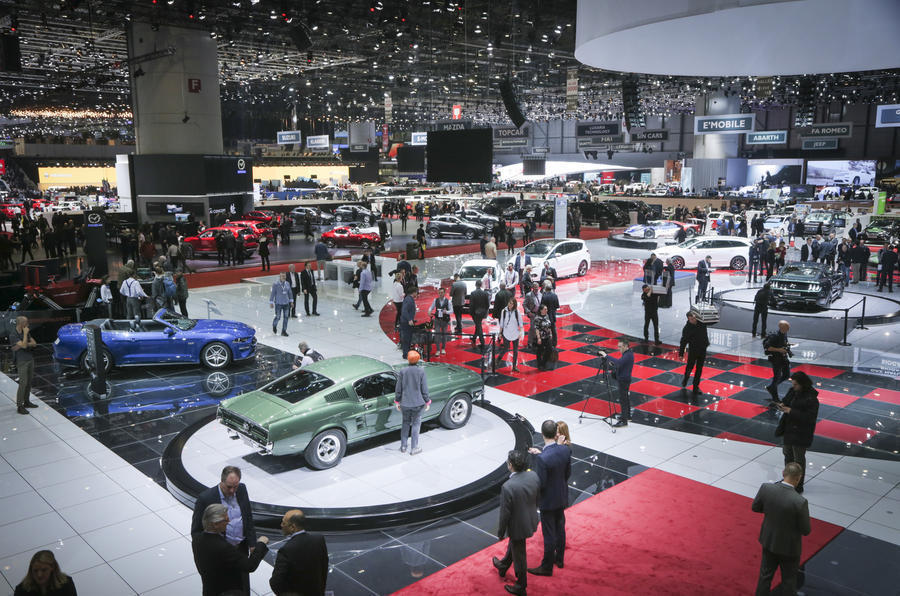
The Geneva release also blames the industry uncertainty and wider financial challenges. That’s undoubtedly true, given the ongoing push to electrification and all the financial challenges post-pandemic have upended the car world no end.
But that could also be seen as an opportunity: car firms are pushing out vast amounts of new models with all manner of powertrains; surely enough to save some back for a press day in Geneva
So what did kill the Geneva show? Aloof organisers, obstinate manufacturers, a global financial slowdown, the fallout from a pandemic, or just plain apathy? In truth, it’s likely a little of all those things. And, really, no matter how hard the organisers tried this year, it felt like this was the inevitable outcome.
The sad truth is that everyone loses: the European industry has lost a marquee event that benefitted car firms, the media and the public. And motor shows now feel even more like an endangered species.
But they’re not dead yet: the weird Doha-based 'Geneva' show apparently survives (although how much value will it now derive by taking the name of a defunct show?), while Paris and Munich are still scheduled for 2024 and 2025 - although both have had their challenges.
That’s why it’s important to consider why the Geneva motor show was killed - and how we can stop it happening to other motor shows.
“Self-Driving Cars: Not Dead Yet”

A commute like this will remain the stuff of dreams – for now, at least...Various car makers have recently pulled investment from autonomous cars, favouring buses and taxis instead
In principle, I like the idea of an autonomous car. Not for when I get into a sports car or classic car or climb onto a motorbike and want to enjoy driving and riding, which, amazingly, even on today’s roads, are still two of my hobbies.
But for when I’m very old and my neck is too stiff to look over my shoulder and there’s still no local bus service, imagine how handy a self-driving car could be for taking me to queue up at the doctor’s. Or for when I’m going to the office or home from the pub, or whenever I’m on a deadline and the M25 is calling, wouldn’t a self-driving car be helpful? Seat back, screen on and let everything else happen. It’s a wonder that Netflix isn’t developing them.
Alas, there are problems. Last week, Renault said developing its cars beyond the current level-two phase of driving assistance systems is “unlikely for the time being” because of the costs of technology, regulations and customer expectation around taking the tech further. Renault talks of a “significant technological complexity gap” between where we are now and where we would need to be for a car to operate “in complex environments” and with – and here’s an important phrase – “limited driver supervision”.
‘Limited’ is in itself a roadblock to adoption of these systems, because if they need any kind of driver supervision, there’s an end to how useful they are – and how much people are prepared to pay for them. If you still need to have your eyes on the road, you may as well have your hands on the controls in some way too if you’re the one going to court after a crash.
No, the holy grail, which seems to be an even further technological leap away, needs to be both hands-off and eyes-off, with the car’s maker accepting all responsibility for anything that goes wrong in the meantime. Because, as Volvo once told me, the handover from the car back to the driver is something that can take “minutes, not seconds”. And an autonomous car that might suddenly want help negotiating a corner on which it has suddenly discovered a horse walking one direction and a family cycling the other isn’t really autonomous at all.
It’s not that cars don’t already drive themselves, to an extent, on existing technology. Every day, I have to turn off a system that tries to tug the steering wheel from my grip on every country road. And last week, another system slammed on the brakes while I was reversing because a pedestrian 30 metres away looked at my car funnily. This isn’t the technology that’s going to take me from home to the office while I go back to sleep.
The technology that is going to do that costs “shit loads of money”, Polestar CEO Thomas Ingenlath told us last year, and would “not be good for a private person to invest in”.
Renault clearly thinks the same, because it has now moved on to thinking about using the tech on buses, where it’s viable if it saves serious money elsewhere – namely on paying drivers.
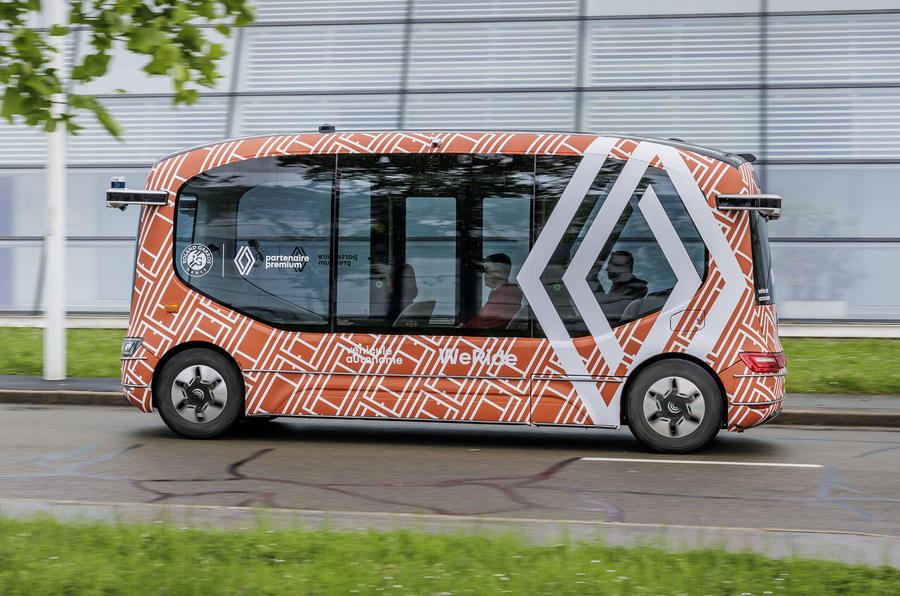
If a bus, or a works van or truck or taxi, is driven by two or three different drivers per day, it’s the staff, not the vehicle or its fuel, that are the biggest running costs. Therefore it doesn’t matter if the self-driving technology on a bus that lasts for 10 years costs many hundreds of thousands of pounds per vehicle if, by fitting it, three drivers suddenly find themselves redundant.
This is why self-driving vehicle tests continue around the world. They’re not for the likes of you and me. As Ingenlath said: “Leave that to Waymo or whoever.” Only they can realise the profits by laying off drivers or by introducing vehicles to routes that would otherwise be unviable.
If you want to doze off on a journey, there’s how to do it. In your own car, prepare to keep your eyes open for a little while longer.
Citroën is Back: Editor’s Letter | Giga Gears
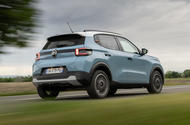
C3 is made to a budget but it doesn't feel cheap – a key part of Citroën's forward-looking ethosCEO Thierry Koskas wants the French marque to "be a popular brand" again while keeping costs down
Citroën is “back in recovery mode after many years of declining performance”, proclaimed CEO Thierry Koskas at the launch of the new Citroën C3. After 24 hours in the company of Koskas, his key executive team and their latest car, I’m minded to agree.
Cars have got more expensive and overloaded with technology, and Citroën is fighting back by offering a level of equipment and performance that doesn't make you feel like you've cut corners and made compromises while also not piling in a load of equipment you’ll never use but have to pay for. The C3 is the first car built like this, with the rest of the range to follow.
Based on the evidence of the new C3, you’re getting a lot of car for your money and it is the rare combination of being cheap without feeling it, while still good value. Plus, it’s a quiet watershed moment in the rise of EVs because the electric version costs the same as a typical petrol supermini. Impressive stuff.
The company has got its messaging right and has a clear plan that makes total sense in the current climate, both inside and outside the automotive industry.
It’s a similar playbook to Dacia in many ways, yet the two remain distinct: at its heart, Dacia is a budget brand and has always built cars to that ethos - albeit one that is itself creeping up in price and positioning - whereas Citroën is a mainstream brand that has used engineering trickery to reduce its costs and allow the customer to benefit. One is coming up, while the other is coming down without cutting perceived costs to the customers.
To that end, Citroën seems to be the only brand in the mainstream to not think that the only way to stay profitable is to make ever bigger and more ‘premium’ cars with more technology. Less can mean more.
“We’re clear what we are,” said Koskas. “Affordable cars, comfortable cars, simple cars. We’re not technology Christmas trees.”
At the heart of all this is the ‘Smart Car’ architecture, which is forensically and ruthlessly designed and developed with an eye on cost and, as such, is considered “a breakthrough for the company”, according to product director Laurence Hansen. Whereas most architectures are designed and therefore costed with the largest and most substantial variant in mind, the Smart Car architecture is designed to a base level that can then be added to. “People are happy with that level,” Hansen said.
A brand like Citroën seems most under threat from the rise of lower-cost Chinese rivals, yet Koskas is not concerned. Instead, he says European production of his cars will help insulate it as Chinese-built models have been excluded from subsidies enjoyed by European-made electric cars in France. He doesn’t know if other countries will follow suit, but he still regards being built in Europe as a “clear advantage”.
Koskas will also not try and build a Citroën to suit every size and budget, focusing on no more than half a dozen well-positioned models in the B- and C-segments. City cars aren’t profitable and larger, D-segment cars just aren’t bought anywhere any more unless they have a premium badge and, in truth, they haven’t been since the days of the Ford Mondeo.
He says the trend of launches will still be balanced towards electric cars, albeit with an ever-improving cost ratio to internal-combustion-engined cars, yet he sees no need to put an end date prematurely on ICE models. The legislation currently says 2035 as an end point, although his reaction to the question suggests he’d happily make cars other than EVs well beyond then.
There are already numbers to back up Koskas’s optimism. The firm’s European market share is at 4% so far this year, having had no quarter above 3.8% in 2023 and one as low as 3.3%. Globally, its sales outside of Europe are up 9% this year.
The overhaul doesn’t stop with the cars: finance offers have been made more attractive; advertising has been improved; and a new website has made Citroëns simpler to specify and buy, including reducing options down to almost zero and specifications boosted as a result. Much of this is “not rocket science”, said Koskas, but simply “better management”.
Dealers are to be made “fresher and more colourful”, and in the case of the UK, there are set to be more of them, with the brand aiming to sign an extra 14 this year. Ford dealers disillusioned with their current brand’s upmarket push are understood to be among them…
Koskas uses five words to describe this latest reinvention of Citroën: comfortable, sustainable, simple, daring and, above all, popular. The decisions he’s taken that have led to lower prices are absolutely that.
“We want to be a popular brand, not low cost, but affordable mobility for everyone," he said. "The new ë-C3 and C3 are low cost but don’t look it.
“There is an absolute need for this, as people did not want the price increases of the past two to three years and do not want to put extra money into a car. There is a territory to be occupied and I don’t want to leave it. It fits absolutely the DNA of the Citroën brand."
AMG Acknowledges More to Sporty Cars Than Speed with Return to V8s

